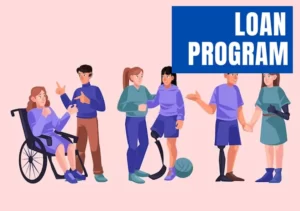COMMUNITY LAND TRUST
Since the late 1960s, community land trusts (CLT) have been providing an alternative to low- and moderate-income people for affordable housing across the United States. The concept is relatively simple, but the implications, at least in the long term, could be quite profound. This entry provides an overview of what community land trusts are, how they have developed over the fast generation or so, where they are today, potential and actual problems with them, and the implications of CLTs for the future.
What Are Community Land Trusts?
CLTs are a uniquely American invention, having’ several strains of influence on them, among those medieval common land patterns from Europe; Native American ideas of nonprivate [and owner-ship; U.S. ideas on land banking, reform, and sharing; and progressive views on communal property or social property.
The basic idea of a community land trust is to factor out the usually inflationary value of land from the equation of impediments for people to buy a home. That is, the value of a home in the United States, at least most of the time, is equal to its land value and the property or structure on it. In most cases, until recently, land values in most parts of the country were increasing, either slowly or very rapidly. In areas where land was scarce or limited, land values increased, thus inflating the price of hones, often beyond the reach of the average American.
The structure or house on the property, whatever its original value, tends to remain stable or actually deflate or depreciate in value over time due to use, wear, and other factors, It is rare for the structure itself unless of historic value or due to major renovations, to actually increase in value. Thus, in places where housing became or is unaffordable for poor and working people, it is almost always due to “abnormal” increases in the value of the land in that area.
The reality of this phenomenon became apparent during the Great Recession that began in 2007. Housing prices began to drop, some precipitously, in various areas of the country. Most dramatically, this occurred in Las Vegas, Nevada; Phoenix, Arizona; and parts of Florida and California, The reason, of course, is that the rising values of homes prior to the Great Recession were an aberrant phenomenon, and the market demand couldn’t sustain it, As more and more homes were built in the above areas and prices climbed higher and higher, there was simply no longer demand them by buyers, and the housing market collapsed, Of course, there were many other complicating factors.
Until 2007, the need for CETs in many parts of the country was enormous, Now, with inflationary housing (read land) pressures decreasing, the urgency of the affordable housing crisis has eased,
Page 1
| Community Land Trust |
too (at least from the price perspective). This does not mean that CLTs are no longer important or do not have a long-term role to play in resolving housing affordability issues in this country.
For example, the foreclosure rates among CLT homeowners are about one-eighth that of regular homeowners. Moreover, land trusts have increasingly gotten into other community endeavors, such as rental housing, vacant lot maintenance, community parks and gardens, and even nonprofit business ventures.
CLTs are nonprofit organizations, governed by a volunteer board of community members, Often, it is a group of progressively-minded people concerned about affordable housing in a particular city that initiates the formation of the CLT. The idea is to have community ownership and buy-in to the land trust model, with community members eventually sharing governance of the organization, With ownership “split” between the homeowner and the land trust, there needs to be a dual relationship between those living in land trust homes and those providing stewardship over the land. Ideally, the local CLT ( as well as the national network) grows over time.
The initial funding for a CLT often includes a combination of focal, regional, and/or state government; affordable housing trust funds; religious organizations; foundations; the corporate sector; and sometimes individual donors. From there, the continuous “deal-making” on the part of the CLT usually ensures continual funding into the future. At some point in time, the organization should become financially self-sustaining.
Example
Let’s take the example of a house selling in a healthy housing market for $150,000. For most low-to moderate-income people, such a house is probably unaffordable, given the current requirements for home ownership. However, with the help of a CLT, that house could easily become affordable to this category of potential homeowners. If the house itself is worth $50,000 and the land $100,000 and if a CLT became the owner of the land and leased it back to the homeowner (the usual lease is 99 years, and is potentially renewable}, then the homeowner needs to get a mortgage of only $50,000 from a bank. This is probably attainable for most poor and working-class people, especially if the CLT helps assist the home buyer in getting a loan for it.
Since buying a land trust home is as much a philosophical issue as it is an economic one, the assumption is that most everyone who “buys into” the model is not looking for a profit on the place they want to call home, usually for their lifetime. Realistically, however, people may need to move for various reasons (the average homeowner stays in a home for about 6 years), so they need to be able to have some equity in their property. Most CLTs have come up with various equity formulas for their homes, so homeowners are able to get not only their initial investment back but also the value of any improvements they make on the property, as well as a slight appreciation of the property’s value.
Current Status
The major association for CLTs now is the National Community Land Trust Network (NCLTN). As of 2011, NCLTN claims that there are a total of 246 CLTs in the network with coverage in 45 states, though it is not clear how many of those are active, There are probably about 6,000 homes in the land trusts’ hands across the country, This represents a growth from only 65 CLI in 20 states with about 1,000 housing units between them in 1990. Moreover, a wealth of experience of what works and doesn’t work accumulated in that period of time, It is probably fair to say not only that CLTs have become an acceptable method of developing affordable housing but also that any controversy that existed early on about their model has almost, if not completely, dissipated over time.
There are many accomplishments for the NCLTN. Two stand out in particular: (a) The organization runs an academy that offers eight different courses on CLT, from beginning to advanced, and (b) the group’s model ground lease was formally approved by Fannie Mae in January 2011 for use with its products.
Problems With the CLT Model
As CLTs have become more mainstream, some old problems (such as acceptability) have been overcome, while new ones (for example, the amount of equity homeowners get) have developed.
Page 2
| Community Land Trust |
Suffice it to say that with the variable situations and breadth of experience under the networks’ arm, there is a fairly robust database of options to choose from.
Clearly, the development of the Great Recession has posed new and close to unimaginable problems for the model compared to when it was first proposed. Interestingly, foreclosures seem pretty isolated, and few are within CLTs, since if anyone is getting hurt at this juncture in time, it is the community land trusts themselves. The reason, of course, is that they are the landholders, and consequently, most devaluation in property values affects the CLT’s landholdings and not their members. However, it appears that few, if any, CLTs nationwide have actually had to shut down.
Clearly, the need for CLI5 and affordable housing is not going to go away. In fact, even during the worst performance of the housing market since the Great Depression, certain cities (e.g., New York City, Boston) may remain forever unaffordable to low- and moderate-income people. As one of the solutions for America’s housing problems, though, the CLT should be secure as one way to help out.
There are various other problems concerning CLTs, one of the most vexing being the nature of its involvement in the rental housing business and how that is in some ways antithetical to land trust philosophy. However, given its broader mission to provide affordable housing to poor and working-class people, and the fact that it operates in a capitalist society, these contradictions are bound to occur.
CLTs’ Potential Future
There is nothing about either long-term housing markets or the land trust model to suggest anything but further growth. The question really is, what is the full potential of the model, and how much land can the average successful CLT expect to “control” in any particular town, city, or region? One can imagine a CLT in a small city such as Burlington, Vermont, approaching saturation at about 2% to 3% of the housing market (over 400 homes in a market with over 16,000 housing units). In larger cities, the percentage is going to be much less, and it probably is more a matter of concentrating on a particular neighborhood(s) and trying to keep them affordable in perpetuity. Thus, like federally subsidized housing, CLTs will most likely occupy a particular housing niche in certain communities and be one of a number of methods for preserving affordable housing.
John Emmaus Davis has pioneered a new concept, shared equity ownership, which not only incorporates the land trust model but also includes such ideas as limited equity cooperatives (LEC) and progressive resale-restricted (covenant) homes. These programs all make attempts to help low-to-moderate-income people afford at least partial ownership of homes.
Conclusion
Since their inception in the 1960s, CLTs have played a significantly increasing role in helping to provide affordable housing for low- to moderate-income people in the United States. While the actual number of housing units provided this way is small, the model will continue to play an important, though minor, role in the efforts to help house Americans. Along with other methods of providing affordable housing for certain Americans, it is hoped this problem will eventually be solved.
Steven Soifer
See also Affordability; Community Development Corporations; Cooperative Housing; Equity; First-Time Home Buyer; Housing Bubble; Housing Trust Funds; Innovation in Housing Land Bank; Mutual Housing; Nonprofit Housing; Self-Help Housing; Shared-Equity Homeownership; Social Housing.
Further Readings
Benello, C., Swann, R. S., Turnbull, S., & Morehouse, W. (1997). Building sustainable communities: Tools and concepts for self-reliant communities. Lowell, MA: Bootstrap Press.
Corey, J. (2010, February 12). A mode! for all markets? Shelterforce, Retrieved from http://www.shelterforce.org/
article/1859/a_model_for_all_markets/P0
Davis, J. E. (2008, December 22), Homes that last. Shelterforce. Retrieved from http://www.shelterforce.org/
article/1237/homes_that_last
Davis, J. E. (Ed.). (2010). The community land trust reader. Cambridge, MA: Lincoln Institute of Land Policy.
Fireside, D. (2005, March 1). Burlington busts the affordable housing debate: The Burlington Community Land Trust’s radical 20-year experiment in affordable housing. Dollars & Sense. Retrieved from http://www.dollarsandsense.org/archives/2005/0305fireside.html
Krinksy, J., & Hovde, S. (1996). Balancing acts: The experience of mutual housing associations and SE community land trusts in urban neighborhoods. NewCommunity Reinvestment Act 73 “York: Community Service Society of New York,
‘National Community Land Trust Network. (2010). The 2010 CLT manual, Portland, OR: Author.
Soifer, S. (1990). The Burlington Community Land Trust: A socialist approach to affordable housing? Journal of Urban Affairs, 12(3), 237-252.
Website
National Community Land Trust Network (NCLTN).
http://www.cltnetwork.org










+ There are no comments
Add yours